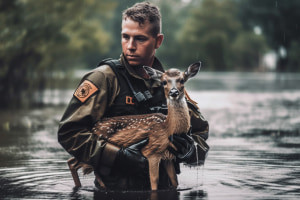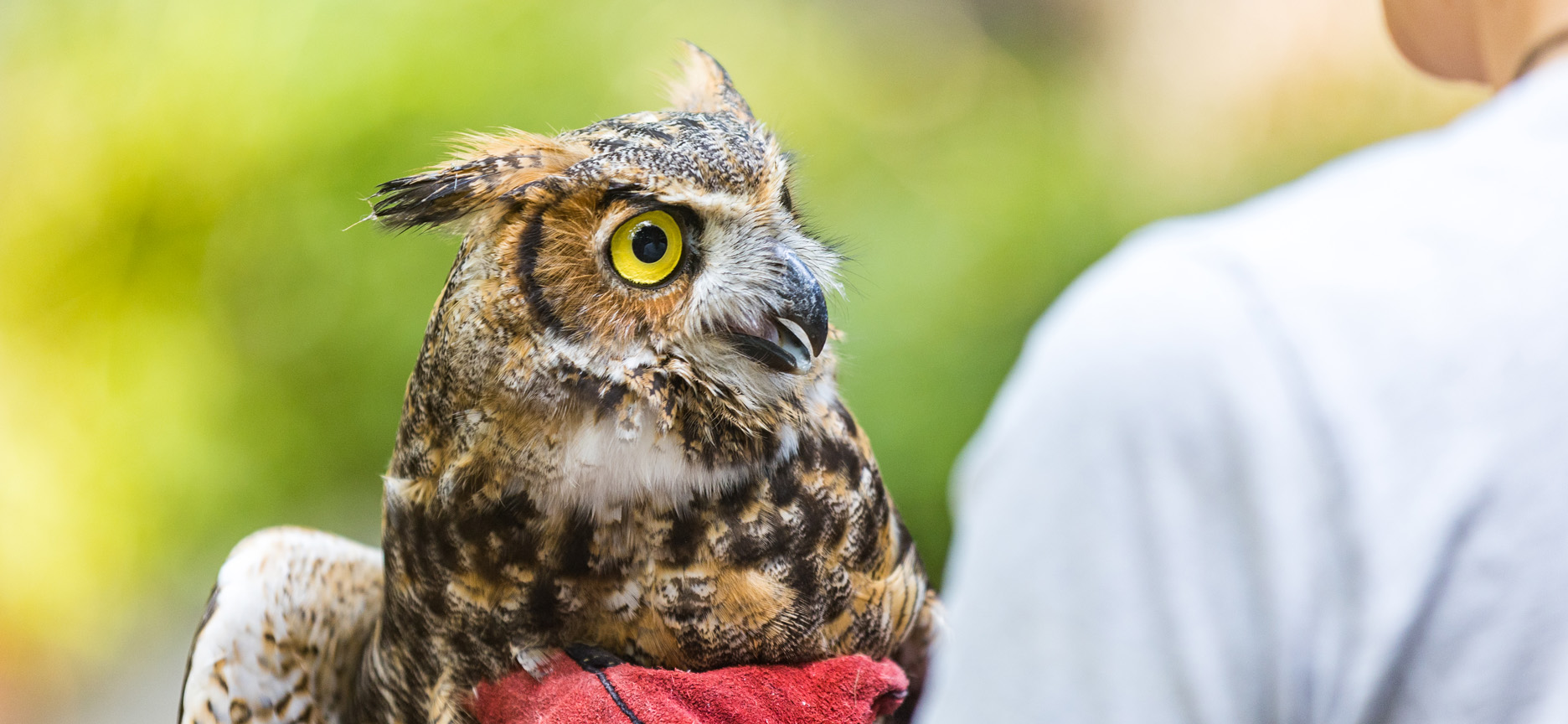Just How Burlington Wildlife Rescue is Making a Difference in Our Ecological community
Just How Burlington Wildlife Rescue is Making a Difference in Our Ecological community
Blog Article
The Duty of Humane Wildlife Removal in Protecting Resident Ecosystems
Humane wild animals elimination is not simply a moral consideration however a pivotal component in protecting local ecosystems. By focusing on non-lethal approaches, it attends to the fragile balance between human expansion and wild animals habitat preservation.
Comprehending Human-Wildlife Problems
Human-wildlife problems commonly emerge when the natural habitats of pets converge with human tasks, bring about competitors for sources and room. As urbanization and agricultural expansion remain to trespass upon wild animals regions, pets such as deer, coyotes, and raccoons discover themselves in closer closeness to human populaces. This closeness can lead to destructive impacts on both wild animals and humans, as pets may cause damage to crops, facilities, and individual building while humans might unintentionally harm wildlife through environment devastation and various other anthropogenic pressures.
The intricacy of these problems comes from a range of aspects. Changes in land use, climate modification, and the fragmentation of ecosystems typically compel wildlife to adjust to new environments, in some cases leading them into residential or industrial areas. Additionally, the accessibility of human-generated food sources, such as waste and animal food, can draw in wild animals to human settlements, exacerbating interactions and prospective conflicts.
Dealing with human-wildlife disputes needs a nuanced understanding of pet actions, ecological dynamics, and socio-economic considerations. By researching these policymakers, communications and guardians can develop techniques that intend to mitigate conflicts while maintaining biodiversity and maintaining environmental balance. The goal is to cultivate coexistence and decrease adverse influences on both human neighborhoods and wildlife populaces.
Relevance of Non-Lethal Approaches
Alleviating human-wildlife conflicts necessitates approaches that focus on the health of both humans and animals. Non-lethal methods of wild animals removal embody this principles by providing remedies that stop injury to wildlife while dealing with human issues. These approaches consist of exemption techniques, habitat modification, and using deterrents to discourage wildlife from getting in human settings (wildlife removal Burlington). By utilizing such methods, we can handle wildlife interactions without turning to dangerous steps, thus maintaining animal populaces and decreasing moral concerns connected with murder.
Non-lethal approaches are essential in maintaining eco-friendly equilibrium. They ensure that varieties proceed to meet their functions within environments, such as managing bug populations or cross-pollinating plants. These methods usually confirm a lot more efficient in the lengthy term, as removing specific animals can create a space that is swiftly filled by other participants of the types or different varieties entirely. This can cause a cycle of continuous removal initiatives, whereas non-lethal deterrents attend to the source of wild animals existence.
Additionally, non-lethal strategies foster coexistence by educating the general public about wildlife actions and encouraging unified living methods. This awareness can bring about much more lasting human-wildlife communications, inevitably guarding both community interests and animal welfare.
Advantages for Biodiversity
When non-lethal wildlife removal methods are employed, they add substantially to biodiversity preservation. By making sure the secure relocation of animals rather than their removal, these methods keep ecological balance and secure the integrity of environments.

Additionally, these techniques cultivate coexistence in between people and wildlife, decreasing unfavorable interactions and protecting the rich tapestry of life that defines biodiverse regions. This technique encourages a deeper understanding and respect for wildlife, fostering community support for preservation initiatives. Inevitably, gentle wild animals removal is a crucial part in guarding biodiversity, guaranteeing communities stay practical and vibrant for future generations.
Methods for Reliable Removal
Applying effective methods for gentle wildlife removal calls for a thorough understanding of pet habits and environment requirements. This knowledge functions as the structure for creating techniques that make sure the safe and honest relocation of wildlife. One main method entails carrying out extensive evaluations of the damaged location to determine the species existing and the certain difficulties they pose. This assessment helps in devising customized techniques that minimize tension and injury to the animals.
An additional essential strategy is employing exclusion techniques, which concentrate on securing entrance indicate protect against pets from going back to frameworks. This approach not only resolves the instant issue however likewise functions as a lasting remedy, reducing future disputes between humans and wild animals. In addition, the usage of non-toxic deterrents and repellents can motivate animals to vacate areas voluntarily, matching various other removal efforts.
Capture and relocation should always be a last option, utilized just when animals posture a straight risk or are not able to exit by themselves. In such cases, utilizing humane traps and making sure the launch of pets in ideal habitats are vital to protecting their well-being. Collaboration with wildlife professionals and adherence to lawful guidelines even more boost the effectiveness of these strategies.

Encouraging Coexistence in Urban Locations
Advertising conjunction in urban locations requires a multifaceted approach that stabilizes human advancement with the demands of neighborhood wild animals. As urbanization remains to increase, it is important to apply methods that minimize human-wildlife problems while maintaining biodiversity. Urban coordinators and policymakers need to incorporate green areas, such as parks and wild animals corridors, into city styles to offer environments for indigenous types. These areas not only sustain wild animals however likewise enhance the top quality of urban life by enhancing air high quality and offering recreational rooms for homeowners.
Education and understanding projects are crucial in cultivating a culture of coexistence. Residents require to understand the importance of wild animals and the role they play in neighborhood environments. Workshops and educational sessions can outfit communities with expertise on exactly how to lessen problems, such as safeguarding trash and making use of humane deterrents to protect against wildlife intrusion.
Moreover, innovation can play a significant duty in promoting coexistence. Making use of wild animals surveillance systems, as an example, can aid track pet activities and notify city preparation decisions. Cooperations between environmental organizations, city governments, and community teams can additionally reinforce these initiatives, making certain that city development progresses sustainably while respecting the environmental equilibrium.
Conclusion
Humane wild animals elimination is important for keeping eco-friendly balance and biodiversity by utilizing non-lethal methods that reduce injury to go to website animal populaces. Ultimately, promoting coexistence in urban areas promotes an unified connection between human beings and the all-natural atmosphere, guaranteeing sustainable ecosystems for future generations.
As urbanization and farming development continue to intrude upon wild animals regions, animals such have a peek at these guys as coyotes, raccoons, and deer discover themselves in closer proximity to human populaces. Non-lethal approaches of wild animals removal embody this principles by supplying remedies that avoid harm to wild animals while dealing with human problems. By employing such techniques, we can handle wild animals communications without resorting to deadly actions, thereby preserving animal populations and decreasing moral concerns connected with killing.
Implementing efficient methods for humane wild animals elimination calls for a thorough understanding of animal actions and habitat needs.Humane wildlife removal is essential for preserving environmental balance and biodiversity by using non-lethal methods that lower damage to animal populaces.
Report this page